

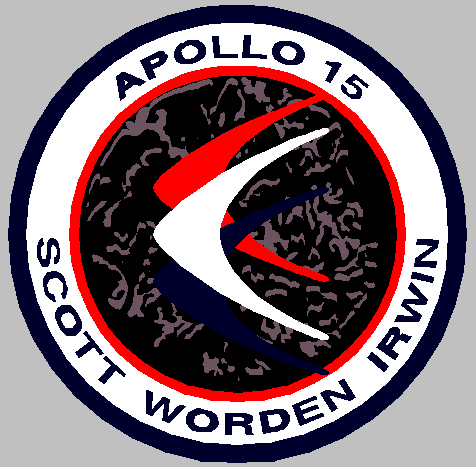
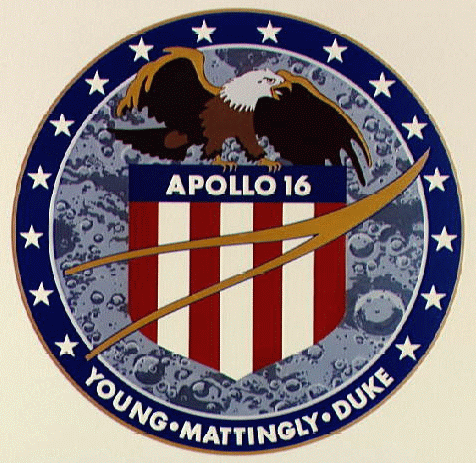
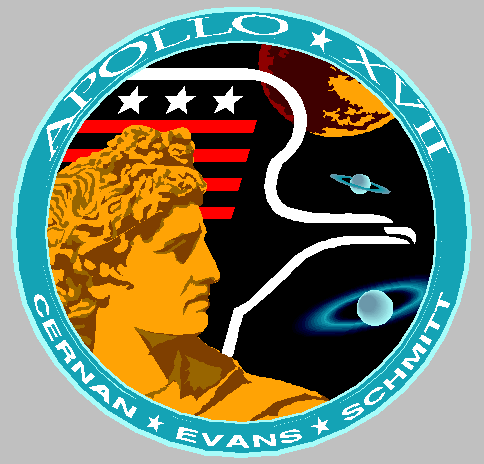
The Fairchild Lunar Mapping Camera
Apollo 17 photographic task requirements
Apollo 15 Statistics and Performance
Apollo 16 Statistics and Performance
Apollo 17 Statistics and Performance
Please note some of the photographs contained in this paper are quite large.
Last update: 2017-02-17
The early Apollo lunar orbiting missions carried out photo-geological surveys of much of the lunar surface adjacent to their orbital ground track. For the initial flights (Apollo's 8 to 14) the ground tracks were limited to the equatorial region of the Moon, as the choice of the initial Apollo landing sites was in the Apollo zone along this equatorial band (see map below).
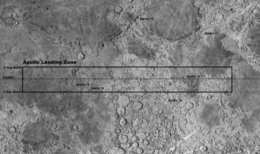
The need to produce highly accurate topographic maps of the lunar surface was identified as a prime goal of the later Apollo flights to aid in the interpretation of the photo-geological studies using imagery from Apollo, earlier orbiting spacecraft and Earth based telescopes. These objectives were defined at the Falmouth Conference of Lunar Science and Exploration in 1965.
The objectives set were:
During the summer of 1964, as the Apollo Block II Service Module design was being defined, North American in Downey, California, under guidance from MSC in Houston, modified the proposed design to provide an empty bay to hold future scientific experiments. Detailed planning of the orbital experiments to be carried in the Service Module began in May 1968, with the formal go ahead being given by Associate Administrator for Manned Spaceflight, George Muller in early May 1969. The space available in the spare bay in the Service Module was reduced by the need to install a third liquid oxygen tank, following the review of the cause of the Apollo 13 mishap. The new tank was installed on a shelf in the forward quarter of the spare bay.
The plan called for the space rating of existing airborne photo-reconnaissance cameras. The photo lab at the Manned Spacecraft Center (MSC) identified the 5-inch aerial reconnaissance camera produced by Fairchild Space and Defense Systems of Long Island, New York as the most suitable hardware for the mapping camera. They also identified the 24-inch-focal-length optical bar panoramic camera produced by the Itek Optical Systems Division of Lexington, Massachusetts.
The Apollo Orbital Science Photographic Team was headed by Frederick J. Doyle of the U.S. Geological Survey at McLean, Virginia.
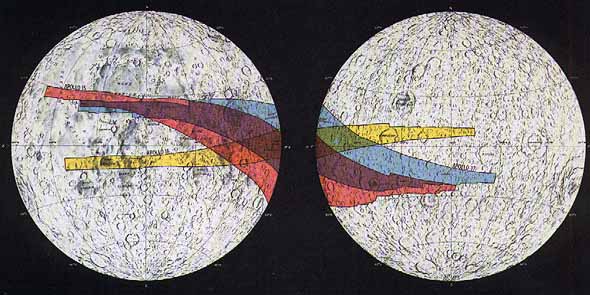
The orbital coverage of the Panoramic Camera is shown below.
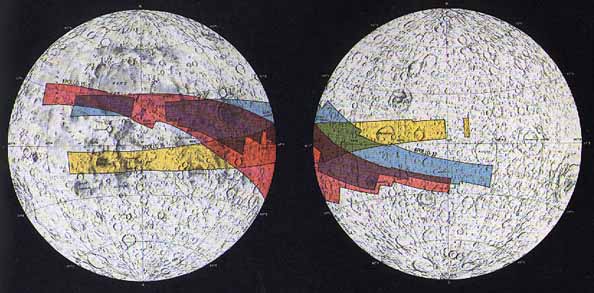
Red = Apollo 15
Yellow = Apollo 16
Blue = Apollo 17

Click on above image to enlarge.
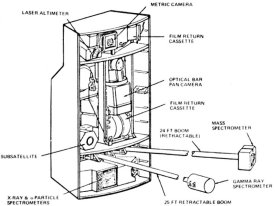
Click on above image to enlarge.
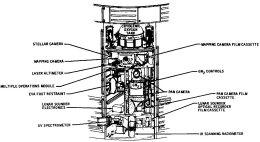
Click on above image to enlarge.
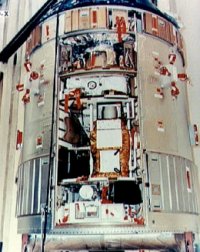
Click on above image to enlarge.
Click on above image to enlarge.
Control panel 230 was added to the CM to enable control of the new SIM bay experiments, which included the Lunar Mapping Camera to activate/deactivate camera heaters and functions, compensate for image motion and extend/retract the camera on its deployment rails. For the Panoramic Camera the panel was used to activate/deactivate camera heaters, supply/remove primary camera power, select operate/standby operation modes, supply film roller torque to prevent slack in film during launch and maneuvers, activate a five-frame film advance cycle if the camera was not operated in a 24-hour period, increase/decrease the width of the exposure slit, and select the stereo or monoscopic mode of operation. This panel was primarily operated by the Command Module Pilot (CMP). Also included on this panel was a power switch to activate the scientific data system information collection and processing equipment. Another switch on this panel activates the remote checkout of the scientific data system frequency generating equipment by the ground.
The exposed film was retrieved from the SIM bay during the early portion of the trans-Earth coast.

In A, the astronaut (CMP) is shown egressing through the CM hatch. During the EVA, all three astronauts are exposed to the vacuum of space and hence all must wear their spacesuits. In B, the CMP has moved to the vicinity of the SIM bay and is preparing to remove the film cassettes from the Lunar Mapping and Panoramic Camera's. He anchors himself to the spacecraft by inserting his feet into special foot restraints, termed ‘golden slipper’, because they were formerly gold coloured. In C, the EVA astronaut is seen removing the film from the mapping and stellar camera’s in one cassette. Another astronaut (usually the LMP) remains ‘standing’ in the Command Module main hatch, from where he documents the film retrieval procedure with photographs and verbal descriptions. From here he also assists the EVA astronaut during his transfers to the SIM bay and passing the retrieved film cassettes to the third astronaut (usually the CDR) who has remained within the Command Module. The film cassettes are safely stowed within the CM for their return to Earth.
Below is a training photograph of Apollo 17 CMP Ron Evans passing a Panoramic Camera film cassette to LMP Harrison H. Schmitt.
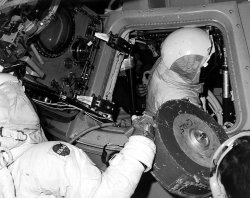
Click on above image to enlarge.
Click on above image to enlarge.
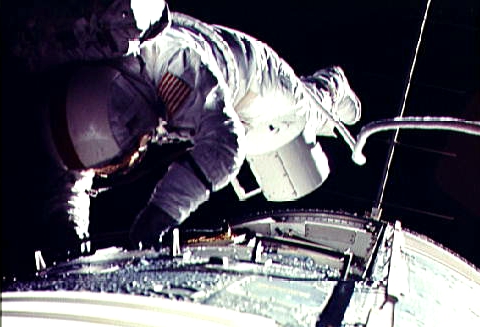
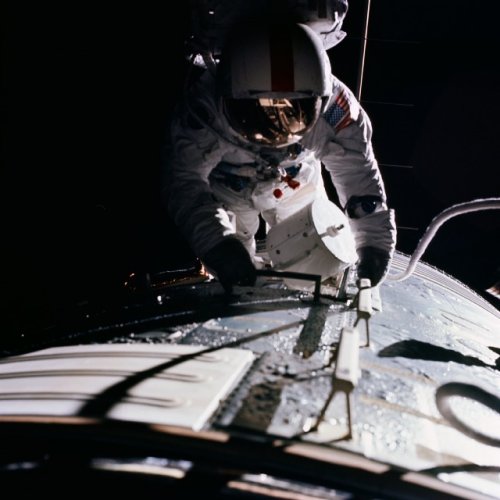
Click here to view a 61-second MPEG of Ron Evans during the early part of his trans-Earth EVA.
On the Moon with Apollo 17, Gene Simmons - NASA EP-101, 1972
Apollo over the Moon, Harold Masursky, G. W. Colton, Farouk El-Baz - NASA SP-362, 1978
North American Rockwell - Space Division, Fact Sheet SP-29, 1972
Chariots for Apollo: A History of Manned Lunar Spacecraft. C. G. Brooks, J. M. Grimwood, L. S. Swenson jnr - NASA SP-4205, 1979
Where No Man Has Gone Before: A History of Apollo Lunar Exploration Missions. William Crompton - NASA SP-4214, 1989
National Space Science Data Center

|
|
|
|
Return to SIM Bay Cameras |
The Fairchild Lunar Mapping Camera |